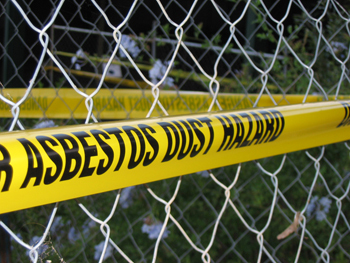
Kelly Rose
Editor

Kelly Rose
Editor
Planning is the key to ensuring your health and safety arrangements really work and in the latest webinar from Southalls Ian Hatherly, Richard Denton, Sarah Leake and Caroline Lee looked at COSHH, asbestos and legionella, outlining challenges that their clients face today in terms of the increased focus on health and safety this year.
BUSINESSES NEED to be compliant every single day of the year, not only a few weeks following an accident when you try to salvage your reputation.
In this webinar health and safety specialists from Southall's outlined challenges that their clients face today in terms of the increased focus on health and safety this year.
Ian said, “There is a huge focus on health both from the HSE and local authority. The health in health and safety is not more important than the safety element, but it is becoming more and more pronounced and therefore we want to make sure you guys are armed with some of the latest topics.”
Richard Denton is senior consultant at Southalls. He noted that the HSE's Go Home Healthy campaign was a main driver for the industry's focus on health.
He explains the legal duties under the Control of Substances Hazardous to Health Regulation 2002 (COSHH). As employers we need to look at substances with the potential to cause harm that could be ingested, inhaled or absorbed and can include dusts, liquids and gases.
“The way that we do that is essentially through COSHH assessment. We identify any substances that we use, we think about how our employees are exposed to that. We assess the risks, look at the control measures and monitor control measures are working and we provide people with training, instruction and information.”
The most prevalent things at the moment are metal working fluids, wood dust and welding fume and these were all explored in the webinar and their Workplace Exposure Limits (WEL) were discussed. Common controls linking all three include COSHH assessments and we should look into material substitutions, although that is not always possible. We can make sure we are using relevant PPE such as disposable dust masks, reusable half masks, full face masks and air fed RPE. LEV is also key and there are different types such as dust bags, on-tool extraction and larger fixed extraction systems.
Metal working fluid
With regards to working with metal working fluids, Richard gave an insight to an engineering company that was visited by the HSE, who served an improvement notice under COSHH Regulation 6 and 7, requiring extraction on all enclosed CNC Millers and Lathes. As consultants, Southall's felt that was fairly broad and there wasn't masses of available information to the client to demonstrate how they were meant to comply with it.
Richard said, “The HSE stated that through studies they found that if machines operated over 2,000rpm the metal working fluid created a mist, which is hazardous to health. So what we looked at was how do we manage this effectively, how is this information clear and accessible to everybody, and what we found through this process was that the company could demonstrate that we'd undertaken suitable and sufficient risk assessment, and that they'd undertaken air monitoring from external specialists and it was noted that there was no exposure on any of the nine machines within that workplace, apart from one CNC machine.”
The HSE still insisted that extraction was fitted to all machines, and the company is currently challenging this under the improvement notice.
Testing metal working fluids once a week using dip slide testing is advised, and Richard explained why this is important, and how you can do this yourself.
Health surveillance
This is a system of ongoing health checks. Richard said: “We want to monitor our staff and make sure they are fit and healthy and able to do their job.”
These should be done on day one so that their base level is. By then testing on an annual basis you can check that nothing is developing since they started.
The member of staff will do a self assessment, and the manager will review and discuss this confidentially, and refer to a GP if necessary. “We want health surveillance to open a line of communication,” says Richard. “You are just asking a simple set of questions, for example, high blood pressure, are you taking tablets? Are there any side effects that mean you shouldn't be driving? If there are any concerns then that you think are going to inhibit or restrict that person or put them or their colleagues at risk, then you can refer up, with their permission, to GP's or HR and then potentially occupational health.
“Essentially, you are looking to protect the business, but you are also looking to protect the individual and make sure that they are capable of undertaking their role.
“The way we do that at Southall's, we use our Safety Cloud system. People pop online with their login and they can undertake health surveillance questionnaires.”
Managing asbestos
Senior consultant and asbestos specialist at Southall's Sarah Leake spoke about asbestos and the common pitfalls that they come across.
Those working in the construction and maintenance trade are most at risk or encountering asbestos and the health problems it can cause and the HSE estimates that there are over 5,000 deaths from asbestos-related diseases every year.
Starting by summarising what is asbestos and why it is a problem, she then went on to an insight into the legislation and how to comply with the duty to manage asbestos.
“Contractors are becoming more asbestos aware and do often ask to see copies of asbestos surveys before undertaking the work, so if you haven't identified where asbestos is and is presumed, the contactor shouldn't be starting work until the area has been inspected. The most effective way to identify if asbestos is present, is to have an asbestos management survey undertaken by a competent surveyor.
“They will identify where asbestos is, note its condition and will give recommendations on how to manage. They survey will be semi-intrusive in nature and this means they will try to gain access to all areas where possible.”
One of the biggest misunderstandings of the legislation is that it places a duty to MANAGE asbestos, the duty is not to survey. “The survey is only half way there to achieve compliance. To manage your asbestos if asbestos is present, you need to produce and implement a management plan to be fully compliant with the regulations.”
To find out more about how to manage asbestos please listen to the webinar on demand.
Legionella
If your workplace or premises has a cooling tower or evaporative condenser, dry or wet cooling system, hot and cold water system or a spa pool then you need to consider Legionella in your risk assessment, and Caroline Lee looked at how to comply.
If you are maintaining water at a temperature between 20-45˚C then you are in the optimum growth range for legionella bacteria and they will proliferate most rapidly.
“The HSE's business plan for 2018-2019 details a controlling high consequence risks from legionella as a high priority. If the HSE are your enforcing authority expect them to target legionella control within your business as a health issue.
“At present, points out Caroline, an inquest is being held into the death of 69 year old Elaine Brown after she contracted legionaries disease following a stay at the Feathers Hotel in Ludlow. So, you can appoint a responsible person to help you with this task and they will take responsibility for controlling any identified risk from exposure to legionella bacteria.”
Caroline also gave an insight into preventing and controlling the risk as well as common misconceptions and errors.
“My last recommendation is to safely store your legionella checks. You can use platforms such as Safety Cloud to retain this information, temperature monitoring is a reliable method for confirming that water system is under control. This will provide you with good evidence in the case of an inspections or enforcement activity and that you are fulfilling your duty to manage. Upload your legionella risk assessment to a similar platform and set a reminder to review your assessment regularly and particularly if anything changes.”
This is a very brief write up of a webinar containing much more information. Please do listen to it on demand, where you will also be able to listen to the listeners questions and answers from the experts. https://events.streamgo.co.uk/health-and-safety-check
Questions
You have stated that health is becoming more to the forefront. To that end, would you be able to touch on the impact of the new requirements of mental health under the first aid regulations?
Ian: First Aid in terms of mental health is becoming huge subject. It is a huge subject for us as a business and is probably the subject for an entirely different webinar. What we are finding across our clients is that as a minimum, is that bigger businesses are having designated people that have done mental health first aid, which gives them an awareness and someone who can be approached in that business when someone is having concerns about their own mental health, or potentially a colleague. That individual you would select or find a volunteer for, and it is normally someone who is known in the business. So, there is a move towards doing mental health first aid courses to give them a better awareness in that area.
What size of property needs a legionella risk assessment?
Caroline: Every water system will require some degree of risk assessment. It might be quite a simple one acknowledging that you have got a water system on site.
Who is responsible for identifying any asbestos containing materials in a housing association owned property?
Sarah: It is who is in control of the premises, so the duty-holder. So that can be who is in control of the property at that time, or it can be the owner. So there may be cases where there are two bodies that are in control of managing asbestos
on site. Usually with housing associations, if you own a building then it would be you, but if you lease the building then it is usually the landlord who is responsible for external areas and the association – as the tenant will be responsible for internal. But it depends what the contract says, so check what your agreement states.
Regarding face fitting, we have found face beards a prominent issue with operatives refusing to shave. What can we do as a business as there always seems to be a different stance for health and safety and HR?
Richard: It is a difficult one to approach as there are HR implications where you can't demand that people shave, but we have to make sure that we are protecting people. That is the ultimate aim. There are alternatives to face fit testing. You can get air fed RPE, which are hoods, so it doesn't matter if people have a beard.



Cranmore Place
Cranmore Drive
Shirley
Solihull
B90 4RZ
UNITED KINGDOM
0345 257 4015